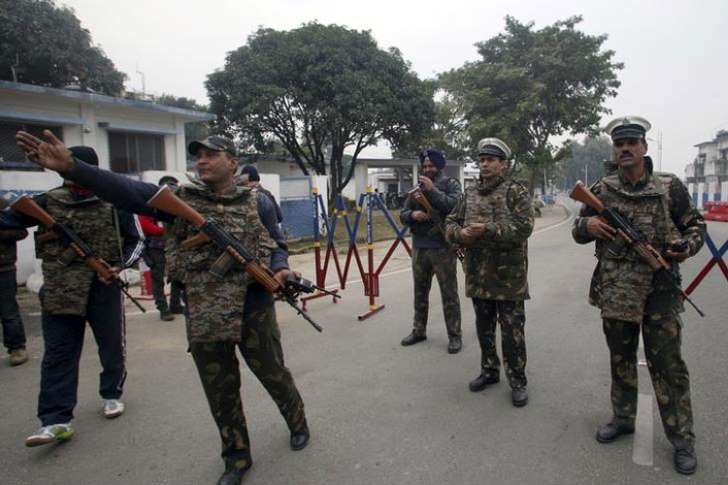November 13, 2017
As the stock market calmly racks up records and swells 401(k) balances amid a 9-year-old bull run, some skeptics who predicted the crash in 2008 are getting nervous.

These are the same doubters who sounded the alarm before anyone else and predicted the past decade's financial crisis and who warn that the market could suffer another meltdown when the good times end on Wall Street.
November 13, 2017
As the stock market calmly racks up records and swells 401(k) balances amid a 9-year-old bull run, some skeptics who predicted the crash in 2008 are getting nervous.

These are the same doubters who sounded the alarm before anyone else and predicted the past decade's financial crisis and who warn that the market could suffer another meltdown when the good times end on Wall Street.
They stress, however, that the end of the bull could be a long way off.
USA TODAY contacted three of them to find out what dangers they see.
- Robert Shiller, a Yale economist and author of the 2000 book Irrational Exuberance, warned of a coming Internet stock bust. In the book’s 2005 edition, he said a “catastrophic collapse of the housing and stock markets could be on its way.”
- Peter Schiff, head of investment firm Euro Pacific Capital, wrote Crash Proof: How to Profit from the Coming Economic Collapse, published in early 2007. Schiff said in August 2006, “The United States is like the Titanic, and I am here with the lifeboat trying to get people to leave the ship."
- Investor Christopher Cole runs Artemis Capital, a hedge fund he says was “born out of the 2008 crisis.” The seed money for his fund came from gains he made a decade ago by betting correctly that a financial apocalypse loomed.
What do Shiller, Schiff and Cole see in their crystal balls?
They see a market distorted by low interest rates, one being driven higher by forces that could keep the rally going longer than many believe. They say that market will end badly once its key underpinnings — low rates, tame inflation and historically low volatility — head quickly in the other direction.
“Risks,” Schiff says, “have never been larger.”
“There’s an illusion of stability,” Cole says.
“I am worried about a correction.” Shiller says. "But my gut is it will keep going up for a while.”
ROBERT SHILLER
HIS TAKE ON STOCKS: A recent study by Shiller concluded, “The U.S. stock market today looks a lot like it did at the peaks before most of the country’s previous 13 bear markets.”
Though optimists shrug off high valuations and talk up the benefits of strong corporate earnings and market calm, Shiller’s review of the past depicts a more “vulnerable” market.
The valuation measure Shiller helped create — the CAPE ratio, a price-to-earnings ratio adjusted for inflation that smooths out earnings using a 10-year average — is above 30. It’s been above that level only twice before, in 1929 and 1997-2002. Both periods saw severe stock swoons: In 1929, the market crash ushered in the Great Depression, and in 2000, the Internet stock bubble burst. “A high CAPE implies potential vulnerability to a bear market, though it is by no means a perfect predictor,” he says.
Shiller says that although robust earnings seem to be good news, that doesn’t reduce the odds of a 20%-plus market drop, or bear market. The 13.2% earnings growth rate in the year that ended in June is above the average of 1.8% per year since 1881, his data show. Market peaks before past bear markets also came during similar periods of high earnings growth. Stock market volatility was also lower than average in the year leading up to market peaks in past bear markets.
THE CALL: He’s worried about a correction, but just because the market exhibits signs that were present before past selloffs, that doesn’t mean the bull run can’t continue. “These rallies can go on for a long time,” he says.
Investors are “impressionistic,” he says. They are in a bullish state, caught up in President Trump’s narrative of success. “He is a motivational speaker for capitalism,” Shiller says. “Trump could inspire more stock increases.”
Although Shiller says a crash could happen, he doesn’t see signs of impending doom like he saw in newspaper articles warning of market trouble before the crash of 1929 or the palpable wariness before the crash in 1987 when a reporter called him at his home the Sunday before Black Monday.
“There was breathless anticipation of something bad happening,” he says of the days before past market crises. “I just don’t see it now. (But) it could change fast.”
THE TRIGGER: It will be a change in the investor mindset that goes viral and causes a switch from bullishness to bearishness. “Some kind of trigger, some suggestion that other investors are changing their minds,” Shiller says. It could be North Korea. Or political instability. Or an indictment in Washington. “Some blowup,” he says.
INVESTMENTS HE LIKES: Shiller says he has lightened up on U.S. stocks in his personal portfolio and sees better opportunities and lower risk in foreign equity markets.
PETER SCHIFF
HIS TAKE ON STOCKS: Schiff sees a market trading at very expensive prices at the same time that a Wall Street fear gauge, known as the VIX, is at record lows. That complacency spells trouble. “Nobody is worried that the good times will end,” he says. “History has shown that such periods of unfettered optimism have often presaged major market corrections.”
THE CALL: The market is the “mother-of-all-bubbles.” And it will pop, he warns.
The Federal Reserve, with its low-interest rate policies, created the tech stock bubble in 2000 and the real estate bubble in 2007, and now it has inflated another financial bubble, he says. Every time a bubble has popped since 2000, he says, the U.S. central bank has swooped in to rescue markets with ever larger doses of stimulus and created yet another bubble and caused debt loads to soar. If the current bubble bursts, the Fed won’t be able to revive the markets with fresh stimulus without causing a massive decline in the value of the U.S. dollar. That means U.S. consumers would face higher borrowing costs, higher prices and a lower standard of living.
“There will be a currency crisis and a sovereign debt (or government bond) crisis," he says.
THE TRIGGER: He says it will be a recession, which could come as early as next year. When the economy turns back down, "that is the end, it is over,” Schiff says. “We are headed for a major economic collapse, and the stock market could easily get cut in half again like 2000 and 2008.”
INVESTMENTS HE LIKES: The firm is heavily invested in foreign stocks and U.S. resource stocks, such as energy.
CHRISTOPHER COLE
HIS TAKE ON STOCKS: Cole says today’s stock market has more parallels to the crash in 1987 than the financial crisis in 2008. As they were 30 years ago, investors have been lulled into complacency by the market calm, better known as low volatility, which has been underpinned by cheap borrowing costs. The problem is investors placed massive bets on the market remaining placid. Roughly $2 trillion of investor cash rides on strategies that “rely on the assumption of market stability to generate returns.”
The problem is volatility will spike, and all those trades could “unwind violently” in a negative feedback loop if the market suffers a shock. “It’s based on the idea that stability breads stability, until it doesn’t,” he says.
A reversal in the trade based on tranquil markets will “contribute to a violent feedback loop of hyper-volatility resulting in a hyper-crash,” he warned in a recent shareholder letter.
THE CALL: In theory, volatility has “nowhere to go but up,” but there’s no clear catalyst to spook markets as central bankers keep rates low, he says. That could stave off a major market fall. “This market rally can go on longer — much, much longer — as long as rates stay low and people remain complacent,” Cole says.
THE TRIGGER: A spike in inflation could cause rising interest rates. The longer the rally goes, the more violent the market's move to the downside could be if a spark starts the fire.
INVESTMENTS HE LIKES: According to its website, the firm is positioned for higher volatility in domestic equity markets and invests in derivatives that rise in value when the stock market becomes more turbulent.
Courtesy/Source: USA Today
















































































































